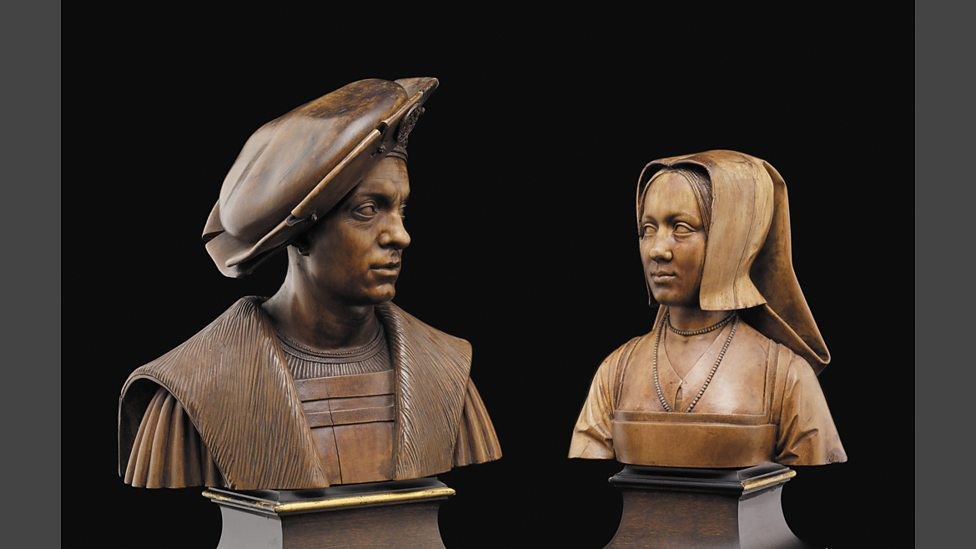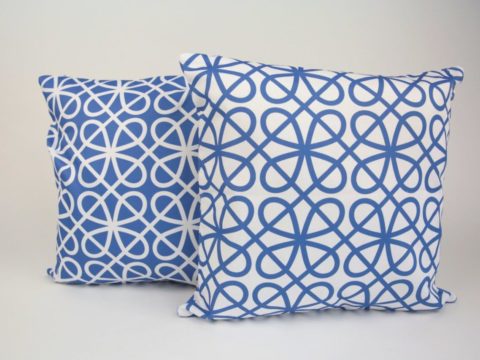Marguerite of Austria: Memorial at Brou
The founding of religious houses as memorials for family members, or oneself, with masses to be said for the souls of the departed, sometimes in perpetuity, was one of the defining elements of mediaeval Catholic Christianity. For those unable to afford an entire religious foundation, there might be the funding of a chantry chapel, or, for those less well off again, a number of masses to be said, or alms to be given. Even the poorest would try to spare a few pennies for a candle to be lit, for it was genuinely believed that the prayers of the living could help speed souls on their journey through purgatory to heaven.
As with most things in life, (or death) nothing is simple, and the founding of religious establishments or the construction of extravagant memorials also had a political edge – it could be used to indicate membership of a dynasty, illustrate wealth, and establish claims to rule disputed territories.
The foundation of the monastery of St Nicolas de Tolention at Brou near Bourg-en-Bresse, by Archduchess Marguerite of Austria, Dowager-Duchess of Savoy, fulfilled all these objectives. A vow to build a convent had been made by the mother-in-law she never knew, Margaret of Bourbon, but not begun before Margaret’s death. Margaret of Bourbon was the mother of Philibert II of Savoy, and Louise of Savoy (later the mother of François I of France and the woman with whom Marguerite negotiated the Ladies’ Peace). Margaret of Bourbon made a vow in 1480 to found a monastery, but little had been done before her death in 1483. An unfulfilled vow could keep the deceased trapped in purgatory, so to fulfil it on her behalf was a virtuous action.
Closer to Marguerite’s own heart, was creating a memorial for her beloved husband, Philibert II of Savoy, and herself. A third aspect was the demonstration of wealth and influence that such a foundation could create, and finally, but by no means least, was the expression of Marguerite’s determination to tie Savoy firmly to the Empire, and minimise French influence.

Philibert II died in 1504, aged only twenty-four, and Marguerite, once her first grief had subsided, and, at that time probably planning to spend her life in her late husband’s duchy, began planning a suitable memorial, that would fulfil Margaret’s vow, and provide a fitting resting place for Philibert and herself. The first architect she employed was Jean de Perréal (c 1450 – 1530). The original plan for a Benedictine monastery was changed to a house dedicated to St Nicolas de Tolentino of the Augustinian order in Lombardy – possibly because Philibert died on St Nicolas’ Day.
Perréal had been patronised by Charles II of Bourbon, Margaret’s brother, and also by the French court – Marguerite is likely to have known his work from her youth in France, and his connection to the Bourbons made him a suitable choice. The original plan was for a church in the form of Latin cross, with five naves. The foundation stone was laid by Marguerite on 28th August 1506, and works continued for the rest of her life.
The main entrance (the west door) has a statue of Christ in the traditional pose of Ecce Homo. To either side, are kneeling figures of Philibert and Marguerite, flanked by angels and their respective patron saints, Margaret of Antioch and Philibert of Tournus. St Nicolas de Tolentino stands over the door.
Other artists and sculptors consulted by Marguerite on the overall design, included Pietro Torregiani, (who carved the tomb of Henry VII and Elizabeth of York, in Westminster Abbey) and Michel Colomb, who had carved the tomb of Duke Francis II of Brittany. The Master Builder and Superintendent of works was the Flemish artisan Ludwijk van Boghen, Although Marguerite never returned in life to see her project take shape, van Boghen travelled there at least twice a year, ensuring that work was carried out only in accordance with plans she had personally signed.
Much of the sculpture was executed by Jan van Roome and Conrad Meit. This melding of French and Flemish was typical of Marguerite’s tastes, but also emphasised the importance to her of promoting Flemish and Burgundian art.
Meit (from Worms, but settled in the Low Countries and court artist to Marguerite) was commissioned to produce the three monuments of Margaret, Philibert and Marguerite. He had a team of three assistants to help him with a project that was monumental in very sense. They were just about completed by the time of Marguerite’s own death.
The tombs are laid out with Philibert in the centre, his mother and wife to either side, but heads slightly tilted toward him, all carved of Carrara marble. Margaret of Bourbon’s effigy reposes on a slab of black marble. She rests her head on an embroidered cushion, and her feet on a greyhound, the symbol of loyalty. Four putti hold shields bearing her initials and the arms of Bourbon. She has four saints to flank her – SS Catherine of Alexandria, Agnes, Margaret and Andrew. The latter saint was patron of the Order of the Golden Fleece. The tomb has smaller statuettes of weepers and the daisy flower (marguerite) is an important part of the iconography.
Philibert’s tomb is grander than his mother’s. It is a two-level structure, a design frequently employed at the turn of the sixteenth century – two effigies are shown. The top one shows the deceased in life, dressed in the finest clothing, and with all the accoutrements of worldly success, whilst the lower one shows a cadaver, to illustrate the transience of human life. Both Philibert and Marguerite’s tombs were in this style – carrara marble above and alabaster below.
Philibert is shown in full armour, with his ducal coronet on his head, and a collar and mantle of the Savoyard Order of the Annunciation around his neck, and draped over his arm. This Order, a quasi religious/chivalric fraternity, similar to that of the Garter or the Golden Fleece, was founded in the fourteenth century by Amadeus IV of Savoy. The Order was suppressed by the government of Italy in 1951, although some dispute the legality of the suppression.
The largest of the three monuments is Marguerite’s own. The east wall has a huge marble altar, with images of the Seven Joys of Mary, and statues of the Virgin, St Margaret of Antioch, and Mary Magdalen. In the lower portion of the tomb itself, rather than being shown as a cadaver, Marguerite wears a shift, and her hair is unbound in a profusion of curls, reminiscent of renditions of Mary Magdalen. The figure of the Magdalen was not just a figurative indication that Marguerite was also a penitent, but had a political message.
The abbey church of Vézelay in Nevers (one of the Burgundian provinces) had claimed to hold the relics of the Magdalen since the mid-eleventh century, a claim, whether true or not, which resulted in the church becoming a centre of pilgrimage. The site was later superseded in its claim to house the saint’s bones, and Mary Magdalen became merely one of a panoply of saints that were venerated. In the 1480s, however, a chronicle of the history of Burgundy was commissioned (probably by Maximilian) which claimed that the ancient Frankish rulers of Burgundy had been converted to Christianity by Mary Magdalen. She was thus seen as an important defender of the Burgundian rulers.
Marguerite had a copy of the chronicle, and several of her other art-works featured Mary Magdalen. She commissioned a stained-glass window picturing the saint for the Magdalen convent in Mechelen and had numerous other works which feature the saint. Thus, Marguerite continued to promote her Burgundian heritage, and indicate that the saint would have special care of the ducal family. Marguerite’s remains were placed in the crypt in 1532.



